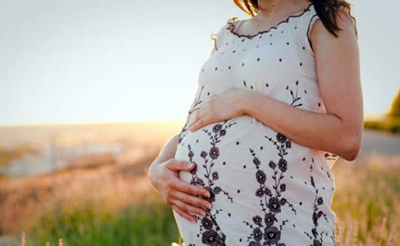Melbourne, Oct 17: Babies born to women aged over 40 from assisted reproduction have fewer birth defects compared with those from women who conceive naturally at that age, a new study has found.
 This is contrary to widespread belief that the greater risk of birth defects after assisted conception is due to the frequent use of these services by older women.
This is contrary to widespread belief that the greater risk of birth defects after assisted conception is due to the frequent use of these services by older women.
According to researchers from the University of Adelaide in Australia, this may point to the presence of more favourable biological conditions in IVF (in vitro fertilisations) specific to pregnancies in older women - but they are currently working to determine the exact cause.
The research is based on data of all live births recorded in Australia from 1986-2002, including more than 301,000 naturally conceived births, as well as 2,200 births from IVF and almost 1400 from ICSI (intracytoplasmic sperm injection).
The average prevalence of a birth defect was 5.7 per cent among naturally conceived births, 7.1 per cent for the IVF births, and 9.9 per cent for the ICSI births, across all age groups.
In births from assisted reproduction, the prevalence of birth defects ranged from 11.3 per cent at its highest for women less than age 30 using ICSI, down to 3.6 per cent for women aged 40 and older using IVF.
For natural conceptions, the corresponding prevalence across age groups was 5.6 per cent in young women, increasing to 8.2 per cent in women aged 40 above.
"There is something quite remarkable occurring with women over the age of 40 who use assisted reproduction," said lead author Michael Davies, professor from University of Adelaide.
"We know from our previous studies that women who undergo assisted reproduction have an increased rate of birth defects compared to women who conceive naturally," said Davies.
"We also know that among women who conceive naturally, the rate of birth defects increases exponentially from age 35 onwards. Therefore, it was widely assumed, but untested, that maternal age would be a key factor in birth defects from assisted reproduction," Davies added.
"However, our findings challenge that assertion. They show that infertile women aged 40 and over who used assisted reproduction had less than half the rate of birth defects of fertile women of the same age, while younger women appear to be at an elevated risk," he said.
"For women treated with IVF and ICSI combined, the greatest age-related risk of birth defects was among the young women, at or around 29 years of age," he said.
"With a prevalence of 9.4 per cent their risk was more than double the rate of 3.6 per cent observed for the patients aged over 40, and significantly higher than for fertile women of the same age, at 5.6 per cent," Davies said.
"There is some aspect of IVF treatment in particular that could be helping older women to redress the maternal age issues we see among natural conception, where we observe a transition at around the age of 35 years toward a steadily increasing risk of birth defects," he said.
The study appears in BJOG: An International Journal of Obstetrics and Gynaecology.






Comments
Add new comment